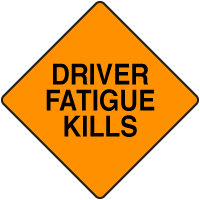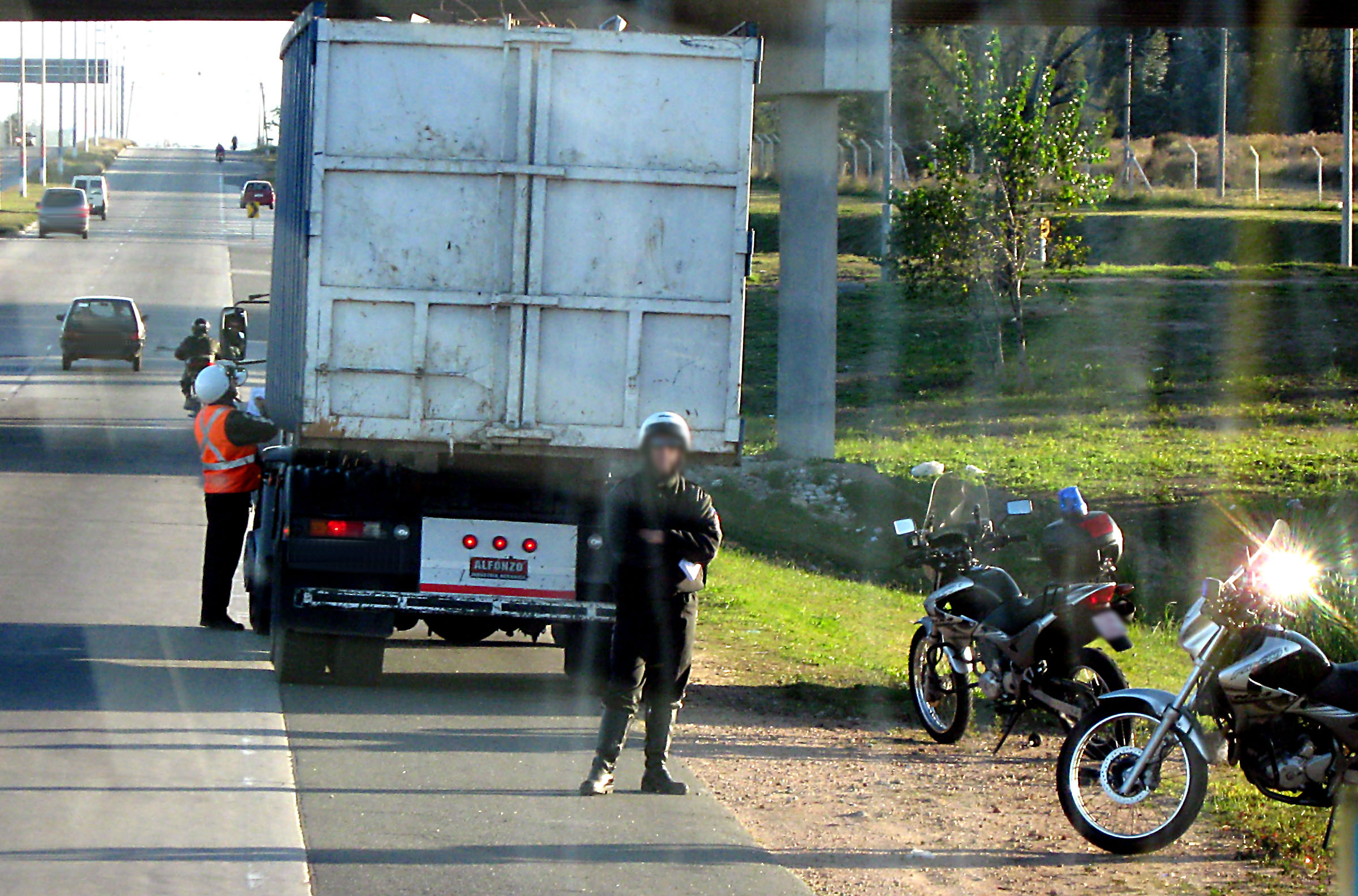 A family member was killed or catastrophically injured in a crash with a big truck. These accidents often cause death or serious brain, burn, amputation, and back injuries. It is your responsibility to decide how to proceed. What should you do?
A family member was killed or catastrophically injured in a crash with a big truck. These accidents often cause death or serious brain, burn, amputation, and back injuries. It is your responsibility to decide how to proceed. What should you do?
Articles Posted in Truck driver safety
Supreme Court declines case on FAAAA immunity for trucking companies and brokers
 Over decades of representing victims of catastrophic truck crashes and their families, we often have seen fly-by-night truckers hired by larger entities that knew or should have known of the dubious safety records of the truckers they hired. Sometimes we have been able to assert claims against the larger companies for negligent hiring of unsafe truckers.
Over decades of representing victims of catastrophic truck crashes and their families, we often have seen fly-by-night truckers hired by larger entities that knew or should have known of the dubious safety records of the truckers they hired. Sometimes we have been able to assert claims against the larger companies for negligent hiring of unsafe truckers.
For several years, insurers for trucking freight brokers have tried relentlessly to use the Federal Aviation Administration Authorization Act (FAAAA) to preempt claims for negligent selection of unsafe motor carriers. The defense position has been that the FAAAA, 49 U.S.C. § 14501(c)(1)) trumps all other state and federal rules authorizing liability of motor carriers, brokers, and freight forwarders. That code section says:
“General rule.—Except as provided in paragraphs (2) and (3), a State, political subdivision of a State, or political authority of 2 or more States may not enact or enforce a law, regulation, or other provision having the force and effect of law related to a price, route, or service of any motor carrier (other than a carrier affiliated with a direct air carrier covered by section 41713(b)(4)) or any motor private carrier, broker, or freight forwarder with respect to the transportation of property.”
Decapitation risk when tractor trailers park on roadsides
 Over decades representing individuals and families devastated by highway crashes with large trucks, one of the most poorly understood hazards we have seen is that of tractor trailers parked on the side of the road. Among the hazards presented by semi trucks parked in the emergency lane is decapitation of people in an approaching car due to trailer underride.
Over decades representing individuals and families devastated by highway crashes with large trucks, one of the most poorly understood hazards we have seen is that of tractor trailers parked on the side of the road. Among the hazards presented by semi trucks parked in the emergency lane is decapitation of people in an approaching car due to trailer underride.
Often late at night on Georgia highways, we see tractor trailers parked on what many people commonly refer to as the “emergency lane” next to the traffic lanes. Unfortunately, many people even in the trucking industry do not appreciate how dangerous this can be for the truck driver and for motoring public.
Stopping on the roadside increases risks of a potential deadly crash, which can be prevented through management practices that include good trip planning, vehicle inspections, and appropriate equipment maintenance.
Truck-bus crash in Gilmer County highlights safety hazards
 This week in north Georgia there was a fatal crash between a tour bus en route to a North Carolina casino and a tractor trailer blocking traffic lanes while waiting to turn left. This happened on Georgia Highway 515 (also known as the Zell Miller Mountain Highway) at the intersection with Whitestone Road in Gilmer County. The bus driver was killed and 43 passengers suffered a variety of injuries.
This week in north Georgia there was a fatal crash between a tour bus en route to a North Carolina casino and a tractor trailer blocking traffic lanes while waiting to turn left. This happened on Georgia Highway 515 (also known as the Zell Miller Mountain Highway) at the intersection with Whitestone Road in Gilmer County. The bus driver was killed and 43 passengers suffered a variety of injuries.
The preliminary investigation by the Georgia State Patrol blamed the truck driver. Troopers reported that the truck driver was making a left turn onto Highway 515 southbound when he paused for traffic, leaving the trailer projecting across and blocking northbound lanes. The northbound bus driver was reportedly unable to avoid crashing into the truck’s trailer. However, first reports are not always conclusive.
This crash highlights issues with both tractor trailer operation and tour bus operation.
Georgia truck driver kills 3 on icy road in Vermont
 People may enjoy watching “Ice Road Truckers” on television. But there is nothing entertaining about a tractor trailer bearing down upon you at excessive speed, out of control on an icy highway.
People may enjoy watching “Ice Road Truckers” on television. But there is nothing entertaining about a tractor trailer bearing down upon you at excessive speed, out of control on an icy highway.
A truck driver from Georgia has been charged with three counts of “three charges of grossly negligent driving with death resulting,” the Vermont equivalent of vehicular homicide.
Last December 29, Lashawn Jones, 41, of Alpharetta, Georgia, was driving Roehl Transport Inc. tractor trailer on slush and ice on U.S. 4 near the Killington Ski Resort in Vermont. The truck driver lost control on slush and ice and collided head on with a vehicle occupied by three people – Ryszard and Anita Malarczyk from Hastings-on-Hudson, NY, and their friend, Jaroslaw Karczewski from Poland. All three were killed in the crash.
What are the main causes of large truck crashes?
 Imagine that a commercial airliner crashed every other week in the United States, month after month, year after year. That is the level of carnage we have today in large truck crashes on America’s highways. In 2013, there were 3,964 people killed and an estimated 95,000 people injured in crashes involving large trucks, according to the National Highway Traffic Safety Administration. That year an estimated 342,000 large trucks were involved in police-reported traffic crashes during 2013. Of the fatalities in 2013, 71 percent were occupants of other vehicles, 17 percent were occupants of large trucks, and 11 percent were nonoccupants.
Imagine that a commercial airliner crashed every other week in the United States, month after month, year after year. That is the level of carnage we have today in large truck crashes on America’s highways. In 2013, there were 3,964 people killed and an estimated 95,000 people injured in crashes involving large trucks, according to the National Highway Traffic Safety Administration. That year an estimated 342,000 large trucks were involved in police-reported traffic crashes during 2013. Of the fatalities in 2013, 71 percent were occupants of other vehicles, 17 percent were occupants of large trucks, and 11 percent were nonoccupants.
In our law practice, we see a portion of this carnage all the time. After years of seeing the aftermath of immeasurable damage to human bodies, and tucking into sealed files the photos I can never show to family members of the deceased, I still cringe at those sights.
Why does this mayhem continue on our highways, year after year? Here are some of the major cause:
Comcast truck kills man in Cherokee County
 Last week in Cherokee County, a Comcast truck failed to stop behind a car that had stopped to turn, went into the opposite lane, and struck head-on an oncoming car, killing the driver.
Last week in Cherokee County, a Comcast truck failed to stop behind a car that had stopped to turn, went into the opposite lane, and struck head-on an oncoming car, killing the driver.
According to media reports, at the intersection of Ga. 140 and Avery Road, a Ford Fiesta stopped to turn left onto Avery Road just before 12:30 p.m. on September 28, 2015. For unknown reasons, a Comcast truck steered to the left to avoid hitting the Ford and traveled into the westbound lanes striking a Chevy pickup head-on.
The driver of the pickup — who I understand was a really good guy with whom I have several friend in common — died at the scene of the crash. The driver of the Comcast truck and an occupant of the Fiesta were also injured.
Russians in Florida face federal criminal charges for selling commercial drivers licenses to unqualified immigrants
Our law practice focuses on representation of people who are seriously injured, and families of those killed, in crashes with large commercial vehicles. While those are often truck drivers, we do not handle truckers’ employment law matters. For legal advice on issues with your employer or truck driving schools, see Truckers Justice Center.
One day in Kansas City, I took the deposition testimony through an interpreter of a Bosnian immigrant truck driver. He was driving with a Florida Commercial Driver’s License (CDL) when he crashed an 18-wheeler into my client on a Georgia interstate highway.
Truckers operating from Port of Savannah protest unsafe conditions

Ten deaths of innocents on I-16 in the past six weeks have prompted a protest by truck drivers at the Port of Savannah against unsafe practices of trucking companies. In a news conference Monday, these truckers said that long hours on the road are to blame from this rash to multiple fatalities
At a Tuesday morning news conference, truck drivers said long hours on the road are the cause of these fatal crashes. These Savannah area truckers are calling for the Federal Motor Carrier Safety Administration to enforce hours of service and fatigue regulations that require trucking companies to limit the number of hours they can require drivers to work.
Consistent with what other truck drivers have either admitted under cross examination or confided to me of coffee at truck stops many times over the years, driver Carol Cauley said trucking companies often pressure them to work when they are too fatigued to drive safely. That, combined with low wages, keeps them from being able to afford food or rest breaks. “I actually have friends I know that have told me that they’ve fallen asleep on the road, and I’m like please slow down and they’re like well, I have to take care of my family.” She said that after truck maintenance costs and fuel, truck drivers often make below minimum wage.
Federal safety rules, which are too often evaded, address driver fatigue:
A federal safety rule on fatigue states that, “No driver shall operate a commercial motor vehicle, and a motor carrier shall not require or permit a driver to operate a commercial motor vehicle, while the driver’s ability or alertness is so impaired, so likely to become impaired, through fatigue, illness, or any other cause, as to make it unsafe for him/her to begin or continue to operate the commercial motor vehicle.”
A related rule on hours of service requires: (1) a trucker can drive only 11 hours within a 14 hour period before going off duty for 10 hours; (2) 34 hour restart must include two 1am to 5am periods and can only be used once in 7 days, and (3) 30 minute break period after 8 hours.
The primary focus of these rules is safety of travelers on the roads, as illustrated by the rash of multiple fatality crashes on south Georgia. But there is also a bad effect truck drivers’ health. The average life expectancy of a truck driver is 61, or 16 years less than the U.S. average, according to Centers for Disease Control data. Trucking is the eighth-most dangerous job in terms of deaths per worker, according to the Bureau of Labor Statistics.
We are currently involved in several truck crash wrongful death cases representing survivors of four people killed when rear-ended by tired or distracted drivers of intermodal freight tractor trailers on interstate highways on the Georgia coast. That includes two killed on I-95 at Brunswick in December 2013, plus two killed on I-16 near Savannah last month.
Continue reading →
International Roadcheck 2015

Will some truck drivers alter their routes and schedules to avoid safety inspections during a 72-hour period of enhanced truck inspections across North America next week? For years, I have heard from truck drivers stories of how they would take alternate routes to avoid speed limit enforcement and safety inspections. Once, when my daughter was attending a college in a neighboring state, a truck driver told me that she should avoid a certain non-Interstate route because all the truckers who wanted to evade the law took that route.
28th Annual International Roadcheck Begins June 2, 2015
The 28th Annual International Roadcheck will take place between June 2 and June 5, 2015. The Roadcheck is conducted by The Commercial Vehicle Safety Alliance together with the Federal Motor Carrier Safety Administration, Canadian Council of Motor Transport Administrators, Transport Canada, and the Secretariat of Communications and Transportation in Mexico.
Within the 72-hour period, there will be over 10,000 certified commercial truck and bus inspectors on the roads of North America. Some believe that because of heightened scrutiny, many carriers will choose not to operate during the three day period. The goal of the campaign is to average 17 inspections per minute over a 72-hour period.
North American Standard Level I Inspection
According to The Commercial Vehicle Safety Alliance, the North American Standard Level I Inspection will be conducted, which is the most thorough roadside inspection. “It is a 37-step procedure that includes a thorough examination of both the driver and vehicle. Drivers will be asked to provide items such as their license, endorsements, medical card and hours-of-service documentation, and will be checked for seat belt usage and the use of alcohol and/or drugs. The vehicle inspection includes checking items such as the braking system, coupling devices, exhaust system, frame, fuel system, lights, safe loading, steering mechanism, drive line, suspension, tires, van and open-top trailer bodies, wheels and rims, windshield wipers, and emergency exits on buses.”
 Georgia Truck Accident Attorney Blog
Georgia Truck Accident Attorney Blog


